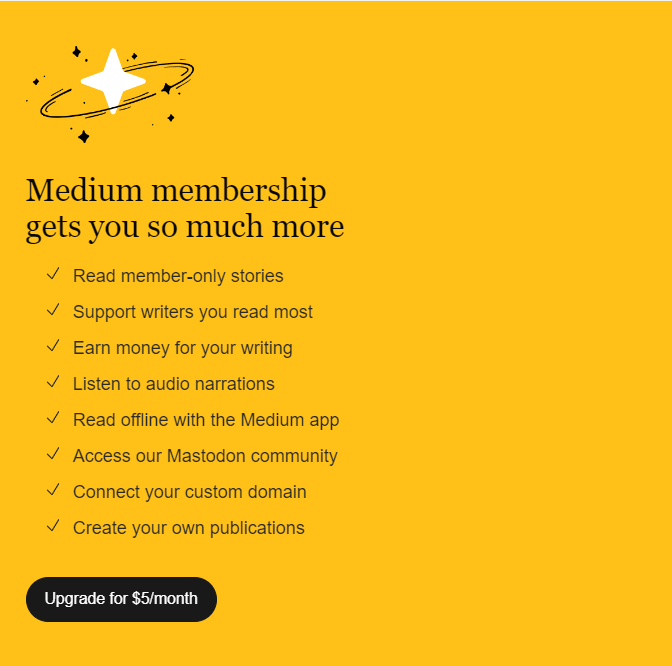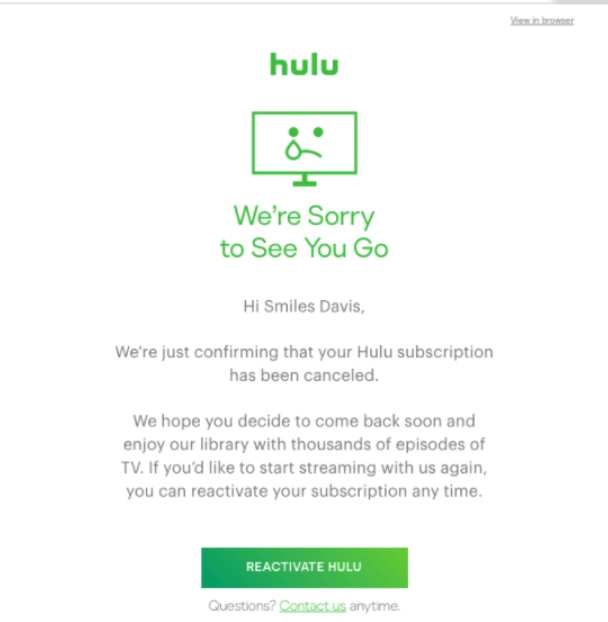Email Marketing Examples
How To Create Winning Email Marketing Campaigns
A study by Gartner presented that the top 3 reasons consumers choose to unsubscribe from an email list are too many emails (53.5%), too repetitive or redundant emails (46.5%), or misaligned subject lines with email content (30.4%). Here are a few strategies you should consider before crafting your next email marketing campaign.
- Segment your customer: The most crucial strategy in an email marketing campaign is to segment your customers based on demographics, behavior, and psychographic profiles. Each segment has a different conversion trigger. A conversion trigger that might work for a millennial audience may not work for GenZ.
- Craft compelling subject lines: A compelling subject line can directly drive up email open rates. It is the first line of text recipients see. A good subject line grabs the reader’s attention and instills a sense of urgency to open the email.
- Don’t just sell; provide value: Promotional emails are essential to boost revenue, but they must be balanced with value-driven emails to keep customer interest intact. Brands must balance informational and promotional emails to maximize their Return on Investment (ROI).
- Structure your email: Emails should maintain a clean structure with attention-grabbing headlines, consistent brand colors, clear CTAs, high-quality graphics, and links to the brand’s social media handles. These elements work together to enhance engagement and reinforce brand identity effectively.
Define your Email Marketing Strategy
First, pick which of the following email types you wish to send to your audience.
1. Newsletter Campaign
51% of consumers like receiving weekly branded email content. A good newsletter imparts the correct information by recognizing its ideal customer segment’s pain points or interests while creating brand recall.
Newsletter campaigns play an important role in nurturing customer relationships. These emails are primarily informational and focus on adding value more than selling. Newsletters provide essential information about the industry and organization as well as valuable tips and techniques. The purpose of newsletters is to build long-lasting customer relationships, trust, and credibility.
Here’s an example of a newsletter from Marriott Hotels. The key elements that make the newsletter stand out include hyper-personalization, catchy graphics, and enticing subject lines. Marriott sends out personalized recommendations based on customer’s viewing patterns and interests. It also focuses on adding a personal touch to the email content. The blend of high-quality graphics and a brief description of each proposition creates an engaging newsletter campaign. Notice how they’ve also added valuable tips around cherished family traditions and magical vacation moments.

Promotional emails inform customers about upcoming offers and deals that they can grab. These emails are triggered to drive sales by creating a sense of urgency using time-bound offers.
Here’s an example of an effective promotional email from Samsung. This email aims to create pre-launch buzz for Galaxy AI’s launch. An enticing offer is presented to trigger potential customers to sign up. A strong CTA paired with fantastic visuals and a specific date and time creates a winning promotional campaign for Samsung Galaxy AI.

An effective promotional email marketing campaign presents a compelling offer, creates a sense of urgency, highlights the offer’s benefits, and incorporates a clear Call to Action (CTA).
3. Welcome Email
The most important communication between the brand and the customer is the welcome email. Welcome emails have up to three times the transaction rates of regular promotional emails, and subscribers who receive welcome emails show 33 percent more engagement with the brand.
The welcome email must explain what your brand does and create excitement among your potential customers. You can always add a welcome offer in the email to sweeten the deal and increase your chances of conversion.
Here is an example of a welcome email from Medium. The first part of the email is a warm welcome message from the CEO of Medium thanking them for joining the platform. The message makes the customer feel valued by the company.

The second part of the welcome email communicates what customers can expect from the platform. This email section ends with a CTA directing the customers to Medium’s main website.

The third and final section of the welcome email highlights the benefits of upgrading to a premium subscription. The benefits of the premium subscription are clearly explained using bullet pointers along with a CTA that mentions the price of the subscription.

An effective welcome email makes new customers feel valued, clearly communicates the company’s purpose, and presents an attractive offer in an approachable, non-promotional manner.
4. Re-engagement Email
Converting an inactive subscriber to a customer is five times cheaper than acquiring a new customer. Re-engagement campaigns play a vital role in bringing back lost customers. An excellent re-engagement campaign leverages personalization by segmenting customers and potential customers based on their interests, engagement patterns, previous purchases, and other key factors influencing their relationship with your brand.
Here is an example of Starbucks’ re-engagement campaign. Starbucks sends birthday reward emails to enhance their customer’s loyalty. This Starbucks email collects customer birthdate data by offering birthday rewards. This birthdate data will help Starbucks create customer loyalty with birthday offers and micro-segment customers based on their birthdate information.

5. Seasonal and Event-Driven Campaigns
Seasonal and event-driven campaigns leverage real-time occasions to generate awareness and sales. Seasonal ad event-driven campaigns tap into customers’ natural purchase rhythms to boost company sales. For example, Christmas and Black Friday are significant events that seasonal campaigns can tap into to boost sales.
 A winning seasonal or event-driven campaign has strategic timing, targeted messaging, and a compelling offer.
A winning seasonal or event-driven campaign has strategic timing, targeted messaging, and a compelling offer.
6. Transactional Emails
Transactional emails communicate customer-specific information, such as password changes, login notifications, and other similar updates. They are not meant to drive engagement or sales, but they play a crucial role in improving customer experience and long-term brand loyalty.

8 Successful Email Marketing Examples
1. Ikea: Welcome Email Example
Ikea’s welcome email starts with a catchy headline and promises to provide great deals to the Ikea community. Customers instantly feel valued and welcomed. The email is accompanied by a pleasant graphic, brief welcome text, and a CTA that leads to Ikea’s home page.
Welcome emails must make the new subscriber feel valued and create good brand recall.

Netflix’s promotional email campaign communicates the benefits of the premium plan to viewers in enticing language. Notice how they’ve added multiple CTAs for different purposes, convincing viewers of the different benefits of the premium plan they’ve just signed up for.

3. Nisolo: Re-engagement Email Example
Nisolo is a popular shoe company. It takes an out-of-the-box approach to re-engage with their lost customers by directly asking them about their interests and preferences. This data would help Nisolo send out hyper-personalized emails tailored to their customer’s interests. They use a meme and a bold headline, “Help us Help you,” to grab readers’ eyeballs.

4. Great Jones: Seasonal Email Example
Great Jones is a stoneware and bakeware brand. It launched its new collection, “Salt and Pepper,” with a visually striking email marketing campaign. They used a black and white design symbolizing their “Salt and Pepper” collection. The microcopy, striking visuals, and the CTA communicate more in fewer words.

5. Medium: Newsletter Example
Medium sends out a daily newsletter with articles personalized to readers’ interests. The newsletter follows a consistent template with a bold headline, “Medium Daily Digest,” which creates brand recall. Each article’s title is supported by a one-line description to pique reader interest. The personal touch, combined with a consistent format and frequency, helps ensure high audience engagement.

6. Uber Eats: Transactional Email Example
Transactional emails should contain all essential information about the interaction with the company. In this example, Uber Eats mentions the transaction date, order value, mode of payment, and the restaurant the customer ordered from. The purpose of transactional emails is to communicate critical information directly and create credibility.

7. Hulu: Re-engagement Email Example
Hulu sends a catchy, thoughtful email whenever a customer unsubscribes from Hulu’s subscription service. The email communicates that Hulu appreciates and values each customer. It is designed to make the customers rethink their decision with a Call to Action (CTA) that guides them towards reactivating their subscription.
Venmo uses a friendly tone and bold graphics in its promotional email marketing campaign. They provide an enticing offer with a dual call to action (CTA) mentioning the offer to encourage prompt customer action. The email has visually appealing graphics and minimal text that takes off the cognitive load from the reader.

Conclusion
As an email marketer, your task is to make your campaign shine among the spam that fills each inbox. Eye-grabbing subject lines, visually striking graphics, and strategically placed calls-to-action (CTAs) are important elements that can elevate your email engagement. It is also important to segment your customers and ensure that the emails are triggered at a suitable time. By implementing these strategies, you can make your email marketing campaigns stand out while significantly enhancing your return on investment.








 A winning seasonal or event-driven campaign has strategic timing, targeted messaging, and a
A winning seasonal or event-driven campaign has strategic timing, targeted messaging, and a 









